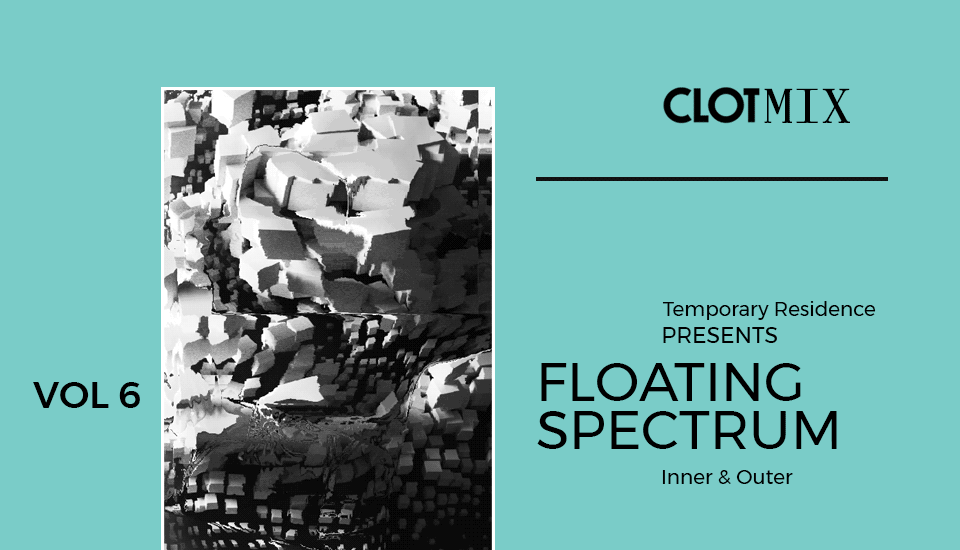Text by CLOT Magazine

In our 6th mixtape, Floating Spectrum presents a selection of music specially put together to resonate with our audience; music that utilizes data from our universe, such as sounds of two merging black holes, earthquake or planetary data sonification, and many otherworldly songs that take you through a peculiar journey.
Floating Spectrum is the moniker for Taiwan-born, Berlin-based composer and audio technologist Mei-Fang Liau. Her fantastic debut album, A Point Between, is coming out in Temporary Residence Ltd. this September. And it’s been crafted from a combination of synthesizers, everyday household objects, and unique software synthesizers made by Liau herself.
Originally inspired by a dance performance by which Mei-Fang Liau that explored the recurring cycles of nature, Liau also relied heavily on a self-made, fractal-inspired software synthesiser called Polyphylla, which simulates the way in which nature creates very complex and organic forms. It allowed Liau to create slowly evolving textures and sounds with complex dynamics. Furthermore, for one of the tracks, Liau built a generative sound system that turns visual data into sound. In this hybrid system, sensitively fluctuating analogue signals, fine-tuned data analysis, and human intuition perform together as one coherent living being.
The artist shares that she wanted to make a mix that would be interesting to audiences of CLOT Magazine, somewhere between art, science and technology. Most tracks are tech-driven, otherworldly, and some of them utilize some planetary data. You can hear the sounds of merging black holes, abstract representation of earthquake motion data, planetary motion in our solar system, etc. And she goes even a step further: In my album, there are high dynamics among songs and within each song – surprises, contrasts, changes of moods, as if it was a sonic narrative. I tried to achieve similar dynamics with the mixtape to keep the listeners engaged throughout the journey. Many tracks have a blurry boundary between organic and digital sounds, which is also what I attempted to do in my album.
Your debut album, A point between, is inspired by nature’s cycles and rhythms. What was the intellectual process behind its inception like?
The idea behind this album started from a dance performance project with a few friends in the Berlin-based art & technology collective Lacuna Lab. In our initial brainstorming sessions, we concluded that we would like to explore the ever-changing phases of emotions and how things eventually change, like the recurring cycles of nature. While creating music for the project, the work from the Taiwanese contemporary choreographer Legend Lin was very inspirational to me. She observed nature and made beautiful connections to Taiwanese culture and human emotions. In her work, all the dancers move slowly, contemplatively, and every movement was so deeply emotional. I wanted to express such a rich variety of feelings through my music.
You’ve built a software synthesizer system inspired by biological fractals. What attracts you to these structures, and what were the challenges when translating it to code and sound?
When writing a body of work, I seek to set technical limitations on my process to force interesting solutions and continuity with each song. So for this album, I kept the same set up of equipment and Ableton templates. I love the richness of nature, and I would like to find creative ways to include it in my work. It brought me to explore algorithmic music, especially how natural phenomena had been applied in visuals and music. Through those studies, I learnt about a few nature-inspired concepts for generative or algorithmic music.
One day when I looked at the spectrum analysis of a simple guitar sound, it reminded me of the idea of fractals: complex and organic shapes created by repeating many slight variations of one shape. It brought me to create an additive synth based on this idea. A quick prototype using Max/MSP made it clear that this approach could indeed be effective and inspiring for my sound universe.
The biggest challenge was implementing a real-time converter from a list of frequency and amplitude partials to a smooth and continuous sound stream (sadly, I didn’t find a good enough ready-to-use implementation at the time). I spent quite a bit of time reading research papers on this topic. It was a distraction from music-making, but learning about the connections between sound and math was fun.
It seems that nature plays an important role in your practice, as well as technology. How do you balance both? And how do you cope with technology (screen/digital) overload?
For me, visual and sound art go hand in hand, an intrinsic relationship with each inspiring the other. For Between The Silence, I engaged collaborator and visual Artist Keith Deverell to help realise the live show. We built the performance around a music video with 3 sections of a redwood forest in the Yarra Valley with a lone female walking between the plantations. The physical nature of the clips created context and grounding for the audience to enter into a visceral experience that explores the relationship between natural environments, aggression and violence. Most of my visual works look to nature for inspiration.
I don’t think I consciously try to balance them. It’s just curiosity that drives me to observe subtle details in nature and play with tools and ideas while not being 100% sure how things will turn out. This exploration is key for getting inspiration and motivation for my creative work and keeping things fresh.
Indeed technology overload can sometimes be a problem. I have a daily routine to make sure I exercise and go out every day (although it doesn’t always work…). Now during summer, I swim most days after work. I also darken my screen to protect my eyes and use an app to force me to take breaks regularly. I have no mobile Internet, so being out means being offline. I rarely share stuff online which maybe helps. But honestly, I am still working on more off-screen options for musical improvisation.






